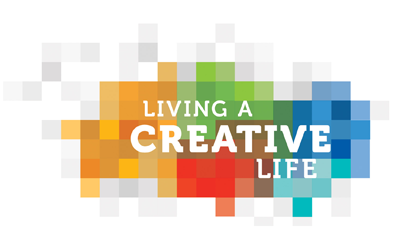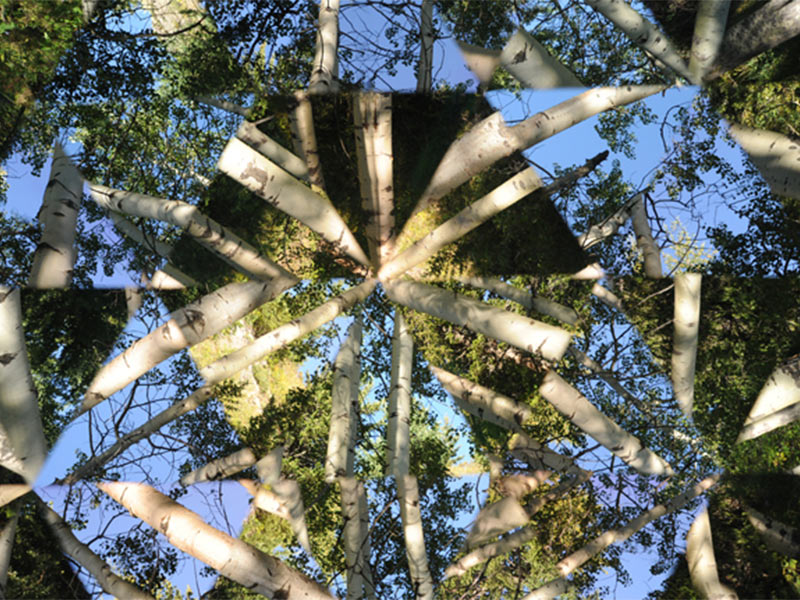Barbara Amos
Artist helps older people explore their creative lives
Barbara Amos wants to invent more words for being old.
In January, the 68-year-old Calgary artist and social innovator and teacher told me stories, over the period of a few phone calls, about her creative life.
They’re stemwinders, a blend of esthetic, philosophical, and environmental activism. They’re also a mirror of the issues politicians faced in 2021, only Amos—like many artists—has been addressing them for decades, trying to shout from the rooftops about misplaced priorities that have led us to the ecological mess we are in today.
But there’s also this: Barbara Amos and her yarn changed things.
Eastern Slopes
The first call was about Amos’s work in the early 2000s, when she had an art studio in the Crowsnest Pass area, to draw attention to the threats posed to the watershed of the Eastern Slopes.
“Word of mouth was they just want to turn that area into the next Fort McMurray,” she said.
Amos at the time used to spend long days in nature, creating work inspired by the beautiful landscapes of the area, which is also where water spills out of the mountains and down across the prairies.
But the beautiful view in those early days of 2005 was disrupted by distinctly red survey tape.
“There I am, drawing by the river, and I see all this survey tape. And I know the forest is coming down. The survey tape is a metaphor for change,” she says. “I began to place survey tape in the water, document it with photography. It became a drawing that was shared with a larger audience.”
At that time, Amos blended her creative life with her social activism with the challenges posed by creating work in the Crowsnest Pass.
“For years and years and years, the community has tried to protect these landscapes. They are fragile ecosystems. They are the headwaters of all the water that flows across the prairies and into Hudson’s Bay,” Amos said. “If those headwaters are jeopardized, over 70 municipalities downstream have problems with their water.”
The impulse to rally the community that felt under threat from a well-financed corporate interest was universal, as were the obstacles the community faced: namely, they had no money, or organization, or mandate except for a desire for self-preservation.
Amos understood something about what the community had, though: they could fight back with a story.
“Despair was evident. What do you do to shift despair, to move things forward instead of in circles?” she asked. “Creativity is restorative. I knew this from my own experience. I wondered if it would work for others.”
Long story short: back in the early days of social media, one of Amos’s images from the Art Works for Wild Spaces Project went viral.
This group had wrapped 30 trees in afghans, knitted with bright yarns. Located along a visible section of road, the intent was to create provocative images that invited inquiry. The media’s attention was drawn to Crowsnest Pass. The community had the opportunity to share its story on CBC, in the Calgary Herald, in the local press and elsewhere.
A second effort, The Red Alert Project, brought people together in red costumes in various places along the watershed, also creating images that invited curiosity and inquiry.
That brought more people into the story, and in 2015, the NDP officially protected the headwaters of the Castle River as a wilderness management and provincial park space. “That was the best way to protect those headwaters,” she said. “That was a significant event for everybody.”
While these projects came to an end, Amos continues to make drawings with yarn in natural landscapes and with survey tape in the river. Survey tape is a metaphor for change. Yarn is a metaphor for textiles whose warmth and nurture is restorative.
It was a win—for a while, until an Australian company bought an abandoned mine site and began to set up a new coal mining effort. A new campaign, a sequel of sorts to 2005, amplified by country musician Corb Lund, resulted in revisiting the decision, and a panel eventually ruling that coal mining in the Eastern Slopes remains a bad idea for the water basin that serves 70-plus Western Canadian municipalities and reserves.
Flash forward to 2020.
Amos is one of a number of Calgary-based creative minds enlisted to participate in the Trico Changemakers Studio, a social innovation hub based at Mount Royal University that includes a variety of agencies dedicated to social change, including an Artist as Changemaker cohort.
As part of her work, Amos is tasked with speaking to the language and story we tell ourselves around aging.
“Nobody wants to talk about being old… it’s a terrifying proposition,” she said. “In your 20s, you think maybe four years ahead. In your 30s, you think maybe 10 to 15 years. But when you’re 68—the next 10 to 15 years is terrifying. It’s terrifying like losing our water sources. It’s like considering climate change. It’s like considering the end of everything.”

Elderhood
In other words, welcome to the Elderhood!
The first problem with talking about growing older, in a culture where ‘older’ isn’t what it used to be, was the lack of terminology to describe the stages of growing older.
“We need to make new words for older people,” she said.
“Look at how many we have for the early stages of life,” she said, continuing. “Prenatal, newborn, baby, toddler, preschooler, child, tween, teen, young adult.
“We have at least nine words or developmental stages for birth to 20 years of age,” she said.
“But from 60 to 80? From 80 to 100? How many words are there to describe those 40 years of development? That indicates how much we don’t know about late life.”
Particularly, how do you describe them in 2021, when 90-year-old William Shatner actually does fly into outer space, when 70-something fashion icon Vera Wang becomes her own best model, and when 100-year-old Iris Apfel is the face of the wildly successful ad campaign for Zenni eyeglasses?
And let’s not forget 44-year-old Tom Brady still playing NFL football at a high level, and how about those 80-ish-year-old Rolling Stones having their first No. 1 hit song in several decades during the pandemic?
“There’s a large sector of humanity in that age demographic that have lived through seven decades and still have capacity and desire to contribute,” she said.
“We’re just learning what it means to have 70 years of experience to share,” she said. “But in our culture and society, too many seniors become isolated and invisible.”

Creating Community
Trico tasked Amos with the notion of creating a sense of community within senior residences, because the most common complaint of the residents was a lack of it, particularly with the pandemic.
After all, Jerry Seinfeld once did an episode about how hard it is for guys to make friends after the age of 35.
Imagine trying to make a few when you’re 75.
Amos set about finding a process to help older people explore their creative lives.
She produced a video about thriving creative communities in later life.
She also facilitates a drawing class at cSPACE King Edward, teaching retired people how to access their creativity. “We meet, with respect for all the years of experience we bring to the group and in the knowledge that we still wish to learn. We come from different working backgrounds—people with years of experience in the sciences, the humanities, and business. And we all have experienced the hard knocks of life.
“We started meeting four months before COVID and we’re still together. We specifically developed ideas around community, creativity, and shared leadership. It was an experiment in creating a community with resilience.”
She made a second video, the short animation Leaving Home that was light-hearted in tone as it explored the notion of community and aging through 10 simple questions.
Along the way, Amos discovered a few things.
“We have a dysfunctional idea of later life,” she said.
That returns Amos to a notion of an earlier project in the park by the Elbow River, when the city commissioned her to create an artwork in 2010 that would draw attention to the fragility of the river ecosystem as it winds through an urban environment.
Amos created a kaleidoscope. It looks like a scenic tourist scope—the viewer steps up to the viewfinder expecting to see an enlarged image. Instead, they find a mixed-up pattern of familiar things. It engages them in a puzzle of reconstructing the view.
What we need in 2022, she muses, is a kaleidoscope that does exactly the same thing with our notions of aging.
“We need to reconstruct what it means to move into the world of elders,” she said.
It also reminded her of the journey she went through creating the animated film, which she had never done before, for the first time at the age of 68.
She took the lesson from her step-dad who at the age of 96, still followed three newspapers every weekend and the daily Globe and Mail. He lived to be 104.
“You never stop learning,” she said.
“That’s what I learned from Gordon.
“You keep going.”
On November 16, 2015, Calgary Arts Development hosted a working session with approximately 30 creative Calgarians from various walks of life. Many of the small working groups voiced the need to gather and share more stories of people living creative lives.
That need has turned into The Storytelling Project.
The Storytelling Project raises awareness about Calgarians who, by living creative lives, are making Calgary a better city, effecting positive change and enriching others’ lives.
That need has turned into The Storytelling Project.
The Storytelling Project raises awareness about Calgarians who, by living creative lives, are making Calgary a better city, effecting positive change and enriching others’ lives.
The Storytelling Project raises awareness about Calgarians who, by living creative lives, are making Calgary a better city, effecting positive change and enriching others’ lives.

